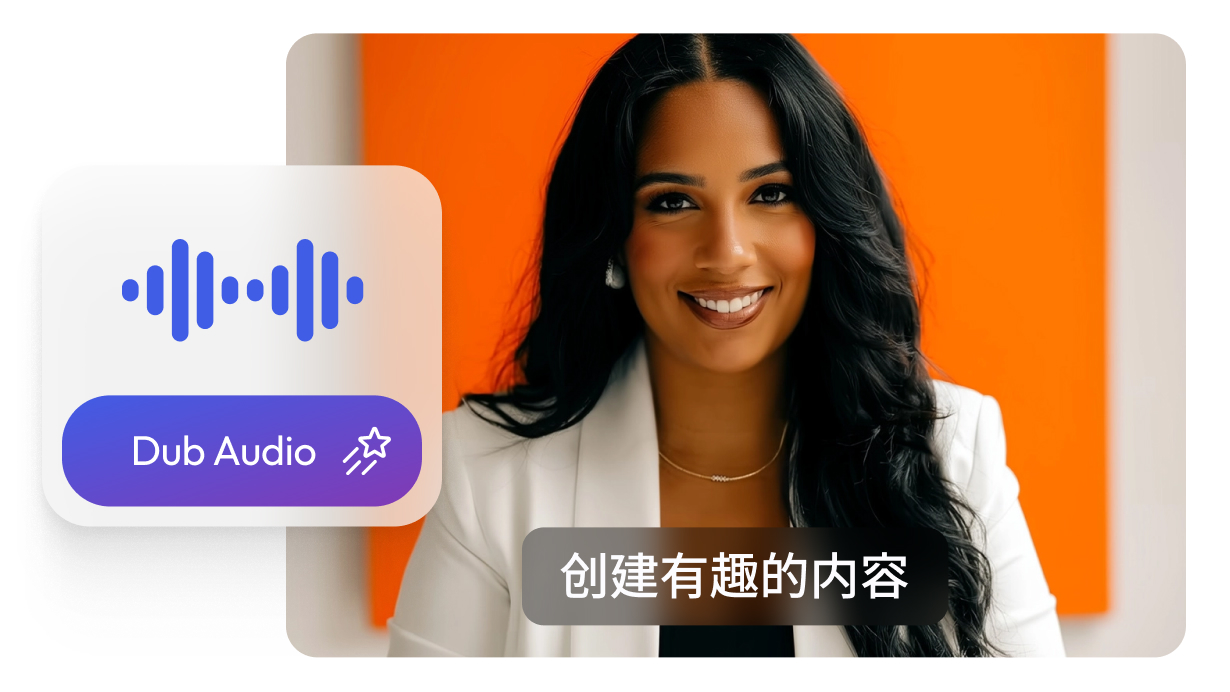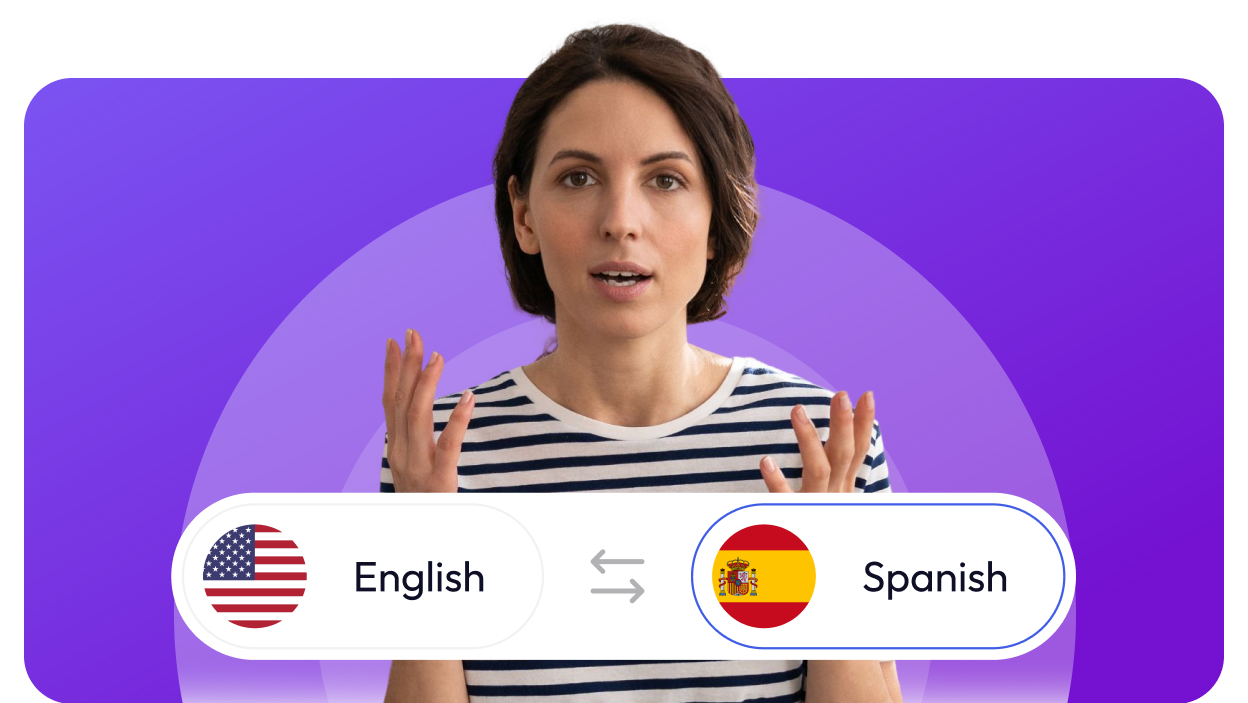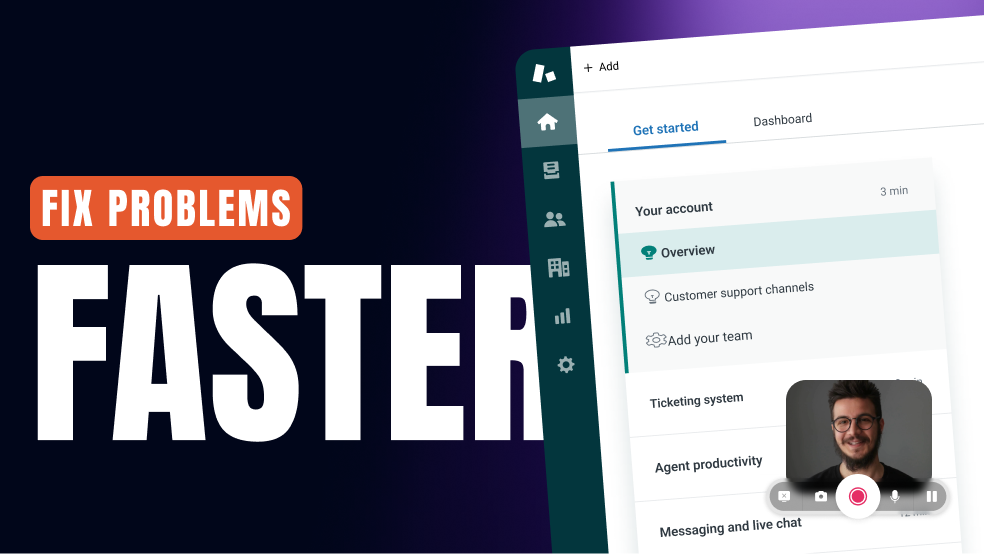Content Creators & YouTubers
Expand your reach without re-recording videos. Dub long-form content, then repurpose it into AI Shorts or vertical clips using the YouTube Shorts Maker all while keeping voice consistency across languages.
Try Now

Generate high-quality audio dubbing with perfect voice match and sync in any language. Get realistic, natural-sounding AI voices to dub audio and achieve scalable audio localization for any project.

Seamless AI voice dubbing in multiple languages to create perfect voice dubs that sound just like you, in any language.
Auto-generate accurate, time-synced AI subtitles in any language, fast and hassle-free.
Instantly convert written text to high-quality voice with text to speech, real human voices made with AI.
Clone voices with stunning accuracy to create personalized audio at scale. No voice actors needed.
Turn one video into multiple scroll-stopping clips using the AI Clip Generator.
Turn your script into ready-to-share videos with visuals, voice, and subtitles with AI video generator.
Transform any voice with Wavel’s AI voice changer realistic, expressive, and customizable in any style or accent.
English
Spanish
French
Hindi
Japanese
German
Russian
0/500
Original
Clone
Original
Clone
Original
Clone

Original Voice

Character Voice

Female Voice

Deep Voice
Build a Celebrated AI Voice Brand – Trusted by Industry Leaders!
Is reaching global audiences without language barriers holding you back? With our audio dubbing tool, you can transform your content to speak directly to listeners in their native language, whether working on audiobooks, podcasts, or marketing content for platforms like Audible, Spotify, etc, saving you from the hassle of manual alternatives. Compatible with diverse audio file formats like MP3, WAV, or AAC, ensuring your message resonates with your audience anywhere. Audio dubbing is the post-production process of replacing a video’s original dialogue with new audio. Traditionally, this meant long recording sessions, professional voice actors, and expensive editing workflows. AI changes everything. With modern AI dubbing, your content can be translated, re-voiced, and synchronized automatically while preserving the speaker’s tone, pacing, and emotional delivery. Whether you’re improving audio quality through Automated Dialogue Replacement (ADR) or localizing videos for international audiences, AI makes the process faster, more affordable, and infinitely scalable. Instead of juggling subtitles, voice artists, and timelines, you can combine audio dubbing, AI auto subtitles, and multilingual delivery into one streamlined workflow built for today’s video-first world.
Our cutting-edge AI models enable you to achieve audio dubbing in your voice. They capture the tone and texture of the original speaker and transfer it to the target language with precision. The high-fidelity multilingual dubbing captures vocal nuances like emotions, intentional pauses, and emphases. You can also use the diverse voices in the voice library customized for specific use cases and languages.

Built for creators, teams, and global brands ready to scale.
Jump between video, voice, and script tools without missing a beat.
Cut production time, keep every ounce of creative control.
Audio content reaches audiences in all forms and shapes. For example, when publishing content, you will share an audiobook on Audible, Libby, or Kobo: a podcast on Spotify, Anchor, or Stitcher and some short audiograms on YouTube. On Wavel AI, you can manage and create all the audio dubbing files in one place. Just add new languages and drive accessibility of your content seamlessly. Our tool easily fits into your content strategy, driving engagement like never before.

As businesses expand globally, companies can set themselves apart from competitors with high-quality audio dubbing in any language. But you can do more to build your celebrated audio brand. Add stylized subtitles to your audiogram, or save cloned AI voices to make new audio content. You get all in one place, so you focus on creativity, and we get you the scale.

AI automatically adjusts pacing and pronunciation so new dialogue matches lip movements as closely as possible. This is especially valuable for narrative videos, explainers, and educational content where realism matters.

Import your file and let the AI automatically detect speech and timing.
Select the language, accent, and AI voice that best fits your content.
The AI translates and dubs your audio while keeping natural tone and sync.
Fine-tune pronunciation or timing, then export your dubbed audio instantly.

Expand your reach without re-recording videos. Dub long-form content, then repurpose it into AI Shorts or vertical clips using the YouTube Shorts Maker all while keeping voice consistency across languages.
Try Now


Localize product demos, ads, and onboarding videos without increasing production costs. Pair audio dubbing with Dubbing AI and Caption generator from video to improve engagement, watch time, and global conversions.
Try Now
Deliver learning content that feels native to every audience. Combine dubbing with AI Transcriptions and even transform scripts into visuals using Script to video ideal for scalable e-learning.
Try Now















For Sales Teams
Create pitch-perfect video demos, walkthroughs, and personalized outreach — all from one place. Sell smarter, not harder.

For E-Learning Platforms
Create immersive, multilingual learning experiences at scale. From voiceovers to subtitles — all in one tool.

For Marketers
Run campaigns faster with AI-powered video ads, social clips, and repurposed content — no jumping between tools.

For HR Teams
Onboard, train, and engage employees with AI-powered video content — no editing expertise required.

For Educators
Record, dub, subtitle, and share lessons in minutes. Teach more effectively with zero tech hassle.

Short Clips
Create bite-sized video snippets in a click

For Customer Support
Turn FAQs into explainer videos, localize them with voiceovers and subtitles, and reduce ticket load effortlessly.
Listen to what real users love about Wavel AI straight from the Wavel Community.
Senior Social Media Manager
Wave AI is truly a remarkable company that has revolutionized the way we perceive voices and language solutions. Their comprehensive approach, which encompasses a wide array of language solutions under one roof, is nothing short of impressive. With a strong focus on the positive aspects of our voices, Wave AI has brought a refreshing perspective to the industry. Their commitment to innovation and excellence is evident in every aspect of their work. It's a pleasure to partner with a company that embodies such a forward-thinking and customer-centric approach.
Marketing
As a content creator, I've always sought innovative tools to enhance the quality and impact of my work, and Wavel AI has quickly become my go-to choice for voiceovers. With a library spanning over 250 voices and supporting more than 40 languages, I've been able to cater to a global audience effortlessly. Tutorial videos and chat bot also really prompt to help.
Manager
The option to Collab is amazing because as a content creator, collaborations are quite frequent. Different team members are able to view and edit files, work on the same content concurrently, and share inputs, allowing for true real-time collaboration. You don't have to individually notify anyone. They will get to know your activity which cuts down extra time.
Growth Marketer
I was happy with its realistic AI voiceovers, their support during problems and multilingual support as well which makes it an ideal tool for content creators like us who need a high quality voice generation for work or use and its ease of use, implement and integration was a cherry on top.
Graphic Designer
The voice cloning ability is one of its outstanding ones in Wavel.ai. It can mimic the voice of a person with such precision that it can accurately reflect the tonal variations as well as the impassioned modulation of a person. The speed and the performance of the tool in processing audios are also good; very time-saving for the content producers.
IT Company Marketer
Wave AI is truly amazing! One of its most impressive features is the Voice Cloning function. This function allows you to create long-hour video content with authentic voices that do not require human interpretation. You can even include the voice of your favorite singer powered by AI.
Co-founder
Really cool tool. I run an international company and I have thought about new use cases in order to generate content for my audiences. It works really well and looking forward to the evolution of this technology.
AI enthusiast and Product Manager
You can fine-tune the audio output to meet your specific needs, whether you want to adjust the voice speed, tone, or volume. This level of control is especially useful if you're creating audio content for a particular audience. When it comes to audio output quality, Wavel AI is outstanding.










 btndefault
btndefault  Podcast
Podcast  Learning Module
Learning Module  Read Article
Read Article 






















